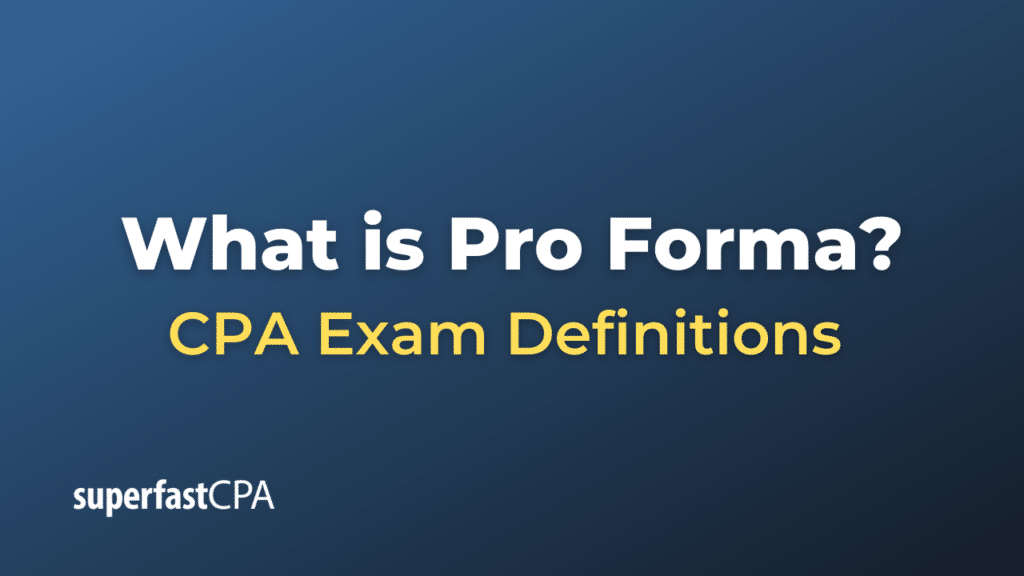Pro Forma
“Pro forma” is a Latin term that means “as a matter of form” or “for the sake of form.” In the world of business and finance, it’s typically used to describe a method of calculating financial results in order to emphasize either projected figures or figures that would have resulted if certain events had not occurred.
Pro forma financial statements can be used for a variety of reasons, such as:
- Future Projections: Businesses may create pro forma financial statements to project future revenues and expenses when they are considering strategic decisions, such as acquisitions or new capital investment.
- Excluding Non-recurring Items: Companies often use pro forma results to present earnings that exclude non-recurring, irregular items like a large one-time expense or a gain from selling a division. The aim is to give investors a clearer picture of the company’s ongoing operational performance.
- Regulatory Compliance: Pro forma financial statements are also required by the Securities and Exchange Commission (SEC) when companies undergo significant changes in structure or operations, such as mergers, acquisitions, or restructuring.
While pro forma statements can be useful, they also have potential downsides. They aren’t compiled according to standard accounting rules, which makes it easier for companies to manipulate the numbers to present a more favorable picture of their financial position or performance. Because of this, while pro forma figures can be a useful supplemental tool for assessing a company’s health, they should be used in conjunction with — and not as a substitute for — standard financial statements.
Example of Pro Forma
Here is an example of how pro forma financial statements might be used:
Imagine that TechCo, a tech company, is planning to acquire another smaller company, InnovCorp. Before the acquisition, TechCo wants to understand how this deal will impact its financials.
TechCo would create pro forma financial statements that reflect what its income statement, balance sheet, and cash flow statement would look like after the acquisition. This might include adding InnovCorp’s revenues and expenses to TechCo’s, integrating assets and liabilities, and reflecting the cost of the acquisition.
For instance, if TechCo has annual revenues of $100 million and InnovCorp has revenues of $20 million, the pro forma income statement might show revenues of $120 million, indicating the combined revenues of the two companies.
Similarly, any synergies expected as a result of the acquisition – like cost savings from reducing duplicate departments or increased revenues from cross-selling – would be reflected in the pro forma statements.
By doing this, TechCo and its investors get an idea of the financial impacts of the acquisition, including how it will affect earnings, financial ratios, and other key financial metrics.
However, it’s important to remember that these are just projections and the actual results may be different based on a variety of factors. It’s also crucial to ensure that pro forma statements are used responsibly, as they can be manipulated to present overly optimistic scenarios.













